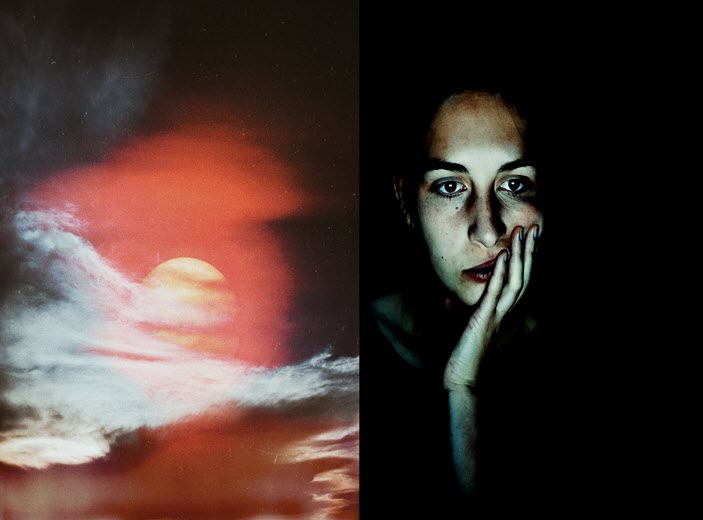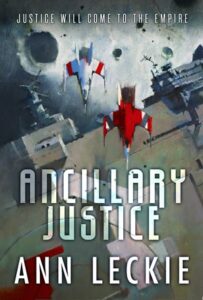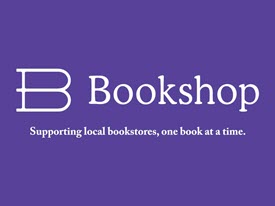
“I find myself skimming where before I slowed and marinated in it all.”
Most of my creative mutuals know how deeply I regard American author, Ursula K. Le Guin. I’ve read much of her work, though I prefer her later fiction, poetry, and non-fiction essays. She is one of our modern masters in the ways of imagining, creating, and storytelling. Her writing is muscular and rich. Her storytelling is focused, her world building expansive. There is deep intent to what she does, and a deep commitment to the craft of it. [1]
Craft and narrative intent and impact are forefront for me as I write these days. The necessary matter of time plays into both concerns. Time in terms of the writing of stories but time, too, in terms of the capability and interest of the people at the receiving end of a story-making artist’s creations.
Social Media’s Impact
 In a recent Bluesky thread, Ann Leckie, author of the Hugo award-winning Ancillary Justice, commented on the shift in “straightforward narration/exposition” noting that “young readers aren’t used to it.” [2, 3] It’s the impact of social media there to my mind and the generational shift in the content and approach found now in high school and college literary education. Younger educators and their younger readers haven’t learned how to read literature where a story is told via longer narration and description. I saw this already some years back when, as an assistant bookstore manager and VHS was the format for the day, I was regularly asked by students “where the videos for all the books were.” It goes beyond the Which is better, book or movie? trope. The movie is the book for many.
In a recent Bluesky thread, Ann Leckie, author of the Hugo award-winning Ancillary Justice, commented on the shift in “straightforward narration/exposition” noting that “young readers aren’t used to it.” [2, 3] It’s the impact of social media there to my mind and the generational shift in the content and approach found now in high school and college literary education. Younger educators and their younger readers haven’t learned how to read literature where a story is told via longer narration and description. I saw this already some years back when, as an assistant bookstore manager and VHS was the format for the day, I was regularly asked by students “where the videos for all the books were.” It goes beyond the Which is better, book or movie? trope. The movie is the book for many.
Add to this the more recent “movies should only be 90 minutes long” vibe on social media. That inability for the viewing or reading mind to purely be with something. Instead there is a need for action and for someone or something to tell me how to feel, how to think, how I should be impacted by the experience. [4]
SHIFTS IN AUTHORIAL INTENT
 After reading Leckie’s thread, I picked up Ancillary Justice. I’ll be reading her entire Imperial Radch trilogy this winter as I turn to my SF project, looking to study her approach to world building (as well as reviewing Le Guin, Becky Chambers, H.G. Parry, Ada Palmer, and N.K. Jemisin for the same reason). Leckie’s narration, blended with her precise style of exposition, is more heavily detailed and drawn out than I remember from my first reading some eight years ago. Then, almost immediately absorbed by the story, Leckie’s method was less visible to me. This time, though, it is visible, and I find myself resisting. They’re intriguing, the details, but also a bit much; not too rich, simply much. I find myself skimming where before I slowed and marinated in it all. And I fret for this, that I have become somehow altered by social media as well.
After reading Leckie’s thread, I picked up Ancillary Justice. I’ll be reading her entire Imperial Radch trilogy this winter as I turn to my SF project, looking to study her approach to world building (as well as reviewing Le Guin, Becky Chambers, H.G. Parry, Ada Palmer, and N.K. Jemisin for the same reason). Leckie’s narration, blended with her precise style of exposition, is more heavily detailed and drawn out than I remember from my first reading some eight years ago. Then, almost immediately absorbed by the story, Leckie’s method was less visible to me. This time, though, it is visible, and I find myself resisting. They’re intriguing, the details, but also a bit much; not too rich, simply much. I find myself skimming where before I slowed and marinated in it all. And I fret for this, that I have become somehow altered by social media as well.
Of course I turn my eyes to my own writing and question the how of my doings there. When, or more simply am I taking too long to tell the tale? And should that be my concern? Mindful of Leckie’s observations, how much do I owe a reader by way of time?
OLD TIMEY EDGE CUTTING
I recall a recent conversation with a one-time professorial colleague. He and I were on the forefront of our then department’s creation of online education programs. The software was still in the making then—no Zoom, no Teams, no digital classroom management systems. As part of that nascent educational advance I worked with colleagues from the Carnegie Mellon software development team, with the videographers, and with our own faculty to develop best practices. My lectures and group discussions were recorded live in my classrooms; foundational content presentations in my office. A single class time typically ran 1.5 to 2 hours. That was the norm, for us the instructors and for our students. Were I teaching now, I cannot imagine creating a video clip longer than 5 minutes, 10 at most. And I cannot but wonder how I could now convey the complexity and intellectual depth of my 2 subject areas (information organization and literary analysis and criticism) in so brief a time frame.
There is that need for speed in the reader or viewer now and, unfortunately to my mind, the need to see the information or content but not to be faced with (or forced to?) the deeper engagement that pushes the development of specific applied intellectual skills or critical thinking abilities.

I find myself in envy of visual artists; the look-at-arts of painting, drawing, print making, textile design, photography, dance, etc. Their work hits, has an immediate or near-immediate impact. The work of a word-artist is no less risky but the impact can be—how to say this?—refused or denied because it requires a different kind of engagement; one demanding time.
ENDPOINT NEW POINT
I have no summary here, no grand solution to offer. It embarrasses me to admit I am relieved I am no longer an active academic; I no longer know how I would teach my areas of expertise given the technology of the current higher education environment.
As a writer, though, I do have and will take power. I will look to my mentor, Le Guin. I will heed her counsel to take the time, to go deep, to shape and construct sentence and story. As a lifelong writing instructor and author of professional, academic, and technical publications, I know what does and does not work in the practical sense. As a person now writing in the realms of imagination, I must needs summon the courage to disregard the current existential dread about narrative style and its conception in the marketplace. I am author not vendor and my readers are that, readers, not consumers. I respect what I am and am doing, and I respect them too.
_____________________________
AUTHOR BIO
J.A. Jablonski has been a university professor and researcher, academic and special librarian, information technology consultant, writing instructor, technical writer, book and database indexer as well as a graphic designer, award-winning display window and exhibits designer, fictional letter writer, live-action role playing actor and theater designer, sewist, and utterly amateur gardener, occasional poet. Jude’s current incarnation is fiction writer; they write in three different genres (mystery, speculative SF, and magical realism) while working to keep one foot in the academic scene by researching material culture in utopian fiction.
Jude’s current projects include a character-driven, ensemble cast academic mystery series set on a small college campus located in the Driftless Region of Wisconsin; an SF novel about competing factions of socio-anthropologists; a collection of stories, poems, and illustrations on the nature of the Muse; and a magical realism tale about a synesthesic young person who meets a one-eyed peer with unusual abilities.
If you have a question or comment for me, drop me a line via my Contact page. You can see a wider view of my creative world on my Instagram page.
© J.A. Jablonski 2024. All rights reserved.
How to cite this post
Jablonski, J.A. (2024, Jan 16). Dreading Time in Fiction Writing. Blog post. J.A. Jablonski (website).
https://jajablonski.com/2024/01/17/dreading-time/
IMAGE CREDITS
Header image
-
- “A picture of a sunset with clouds in the sky.” Photo by Serhii Tyaglovsky via Unsplash
- “Woman with head resting on hand.” Photo by Niklas Hamann via Unsplash
“Video Store | Astoria, Oregon.” Photo by Sean Benesh via Unsplash.
Cover of Ann Leckie’s book, Ancillary Justice. From Leckie’s website page.
Triptych image
-
- Hand with paint spread onto fingers. Photo by Alexander Grey via Unsplash.
- People dancing on stage under shades of blue light. Photo by note thanun via Unsplash.
- Paintbrushes with many colored paints, drying. Phto by RhondaK Native Florida Folk Artist via Unsplash.
NOTES
[1] The Marginalian is a website created and curated by Maria Popova, a modern person of letters. Popova holds Le Guin in considerable regard and often writes about her. This link connects to all the entries on Popova’s site about Le Guin.
Also of interest may be John Plotz’s lengthy and wide ranging 2015 conversation with Le Guin. Citation: Plotz, John. (15 June, 2015). “The Story’s Where I Go: An Interview with Ursula K. Le Guin.” Public Books (website). Le Guin’s website is here.
[2] Ancillary Justice is Book 1 of Leckie’s Imperial Radch trilogy. Books 2 and 3 are titled Ancillary Sword and Ancillary Mercy. Leckie’s website is here.
[3] Bluesky is not yet (but soon will be) a public platform. If you are on it, Leckie’s comments can be found in this thread begun by author C.L. Polk. Meanwhile, here is the text of the 3 posts I referenced.
(Note: IMO = ‘in my opinion’)
“I feel like, when you do something a reader might trip over, it helps to tell them up front that this is going to happen. So, right up front, “Here is some EXPOSITION I am going to do this from time to time” and then it becomes a part of the pattern the reader expects. IMO.”
“Some of the problem (also my IMO) is that straightforward narration/exposition has been out of style for long enough that younger readers aren’t used to it. Also long enough that it’s maybe not in our ears enough that we can just naturally do it so it works.”
“My take is usually…to try to let readers know from the start what I’m going to be doing (more or less, obviously) and then they’ll follow me or not. Maybe start a new trend!”
[4] Granted, this complaint is usually made in response to the superhero franchises, blockbuster shoot-em-ups or space operas, and their oft-intended male adolescent audience. The issue, I think, is that these types of movies and their redundant remakes dominate the market. There are movies for people who like to time-soak in character, story, and place, but those films are less frequently made.


